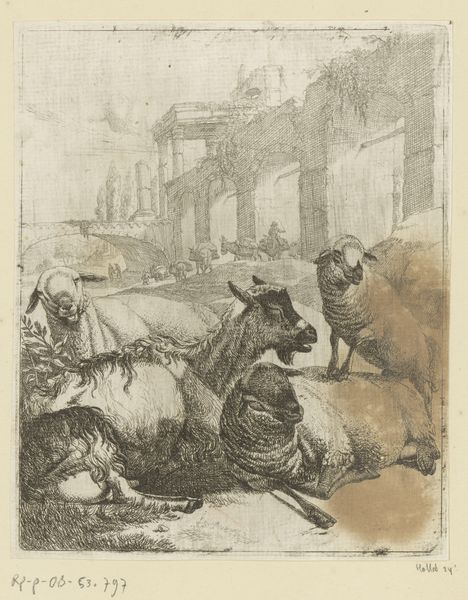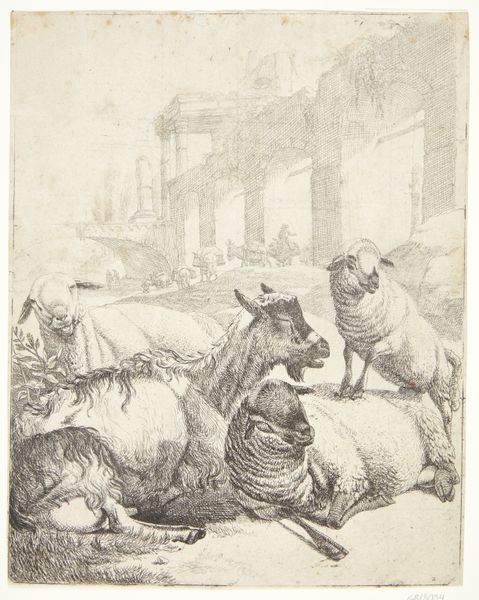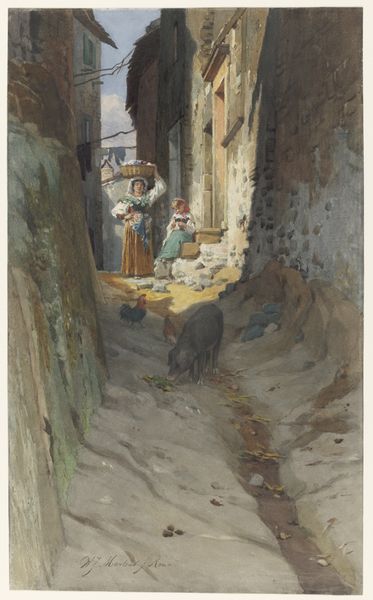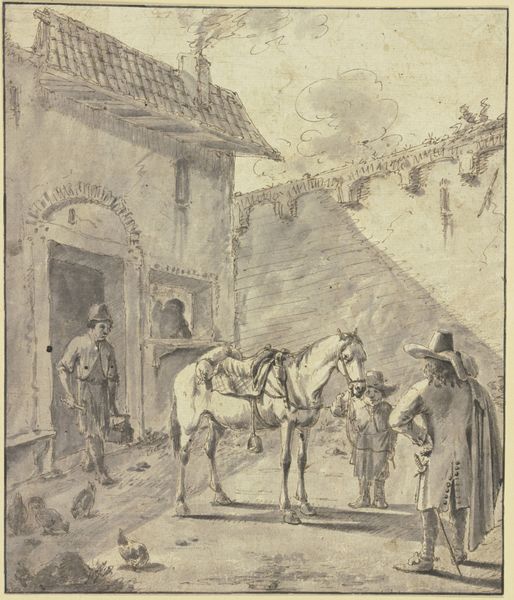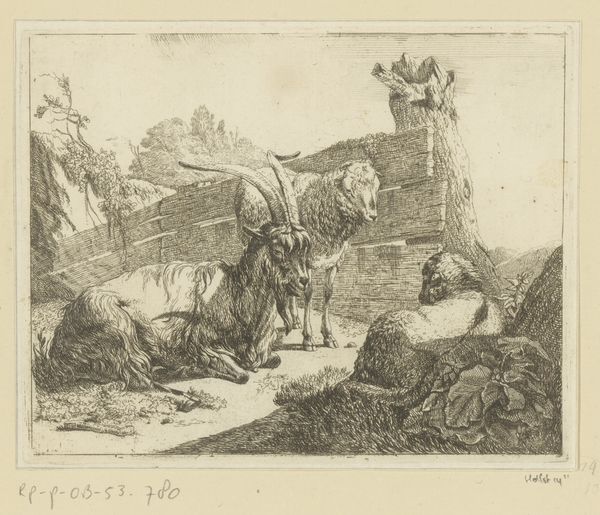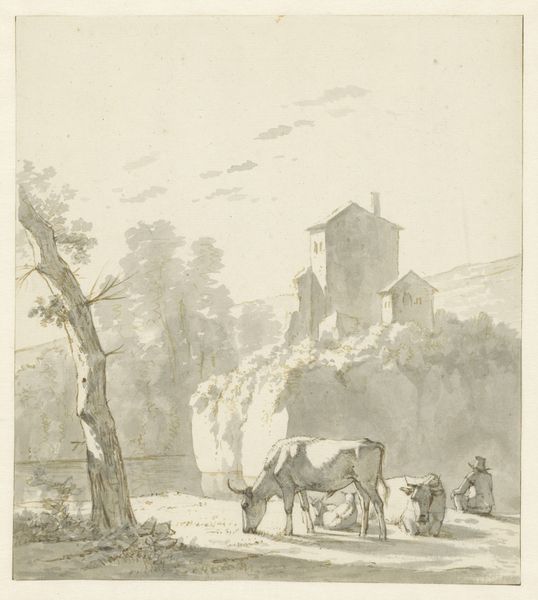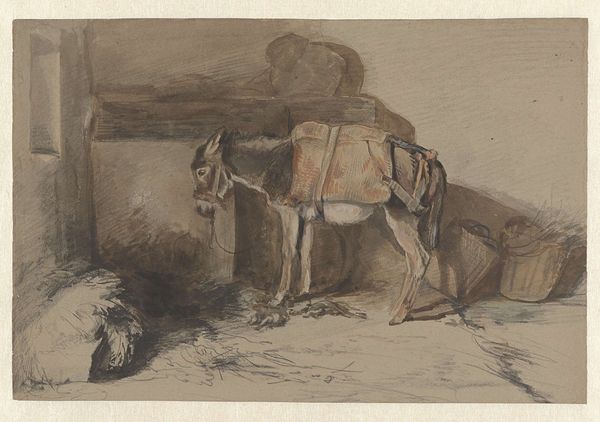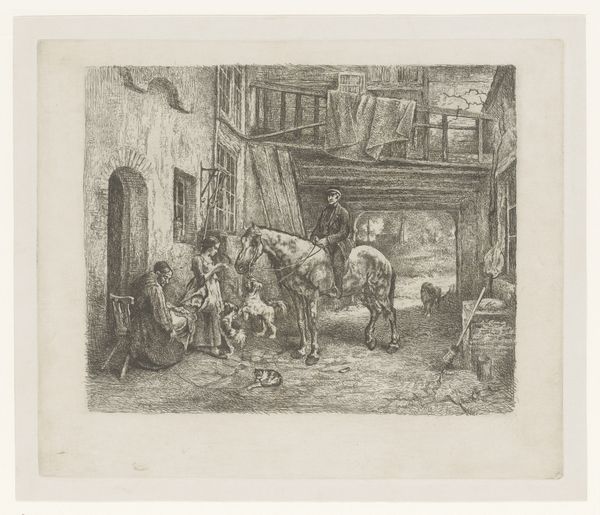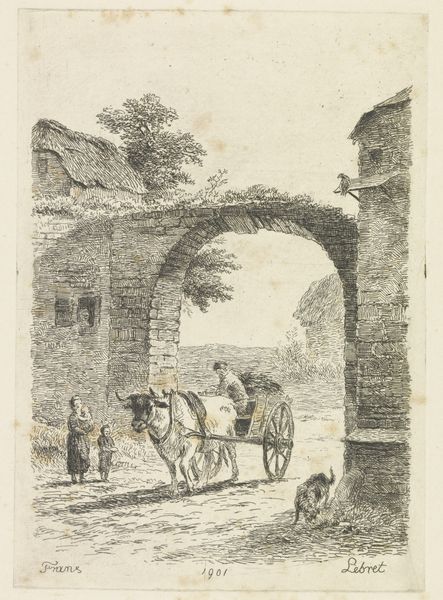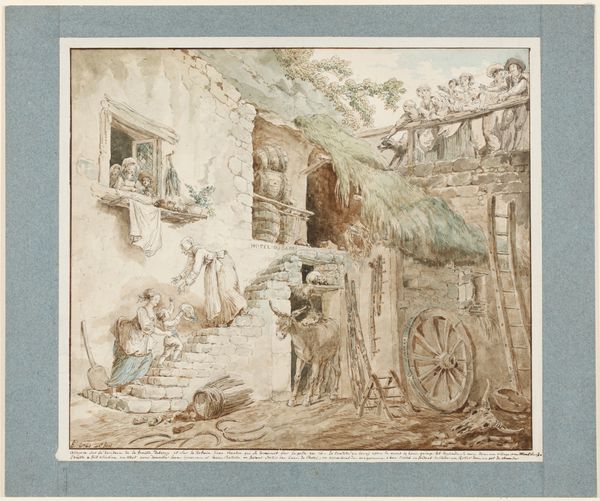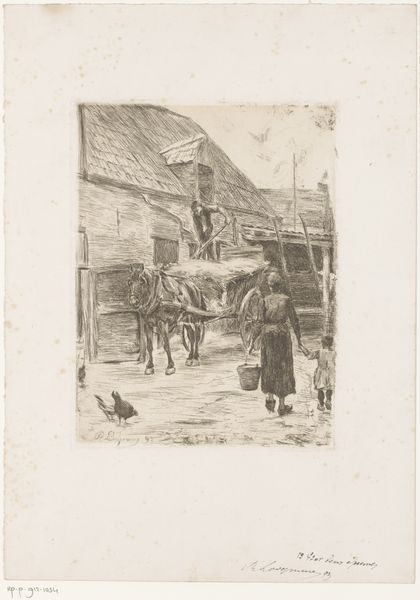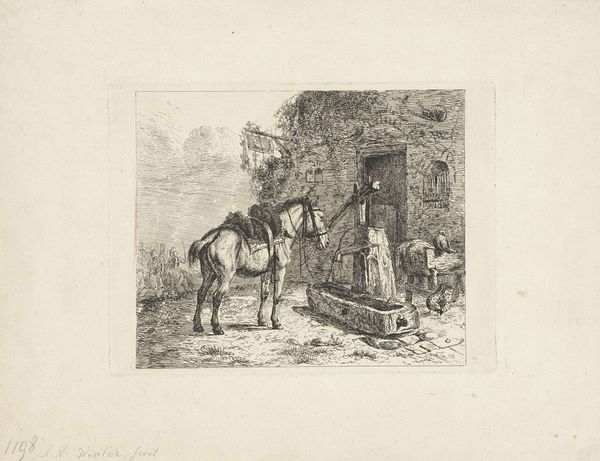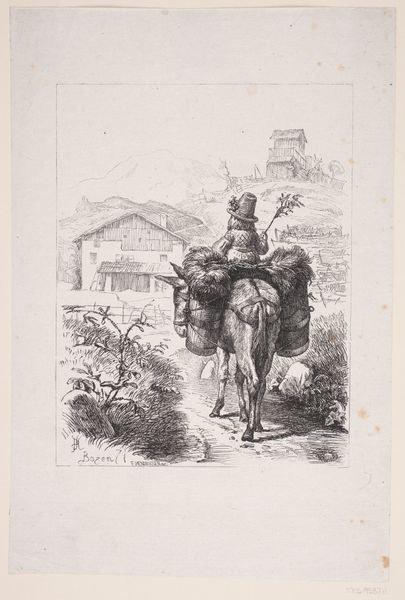![Bernini Fountain, Rome [recto] by Felix Octavius Carr Darley](/_next/image?url=https%3A%2F%2Fd2w8kbdekdi1gv.cloudfront.net%2FeyJidWNrZXQiOiAiYXJ0ZXJhLWltYWdlcy1idWNrZXQiLCAia2V5IjogImFydHdvcmtzL2JkZDE5NTM1LTIwMDgtNDEzYS1hNTY3LWYxOGNmZGQ2YmVlNC9iZGQxOTUzNS0yMDA4LTQxM2EtYTU2Ny1mMThjZmRkNmJlZTRfZnVsbC5qcGciLCAiZWRpdHMiOiB7InJlc2l6ZSI6IHsid2lkdGgiOiAxOTIwLCAiaGVpZ2h0IjogMTkyMCwgImZpdCI6ICJpbnNpZGUifX19&w=3840&q=75)
Dimensions: overall: 21.3 x 13.8 cm (8 3/8 x 5 7/16 in.)
Copyright: National Gallery of Art: CC0 1.0
Curator: Looking at Darley's "Bernini Fountain, Rome", circa 1867, executed in watercolor, it's interesting how the seemingly straightforward depiction of a Roman cityscape belies a commentary on the everyday labor that underpins the grandeur of Rome. Editor: It does have a certain…humble quality. I wasn't expecting that considering the subject includes the Bernini Fountain. What do you see in this piece? Curator: The key here is Darley's choice of subject matter within that cityscape. Notice how he positions the working animals, the donkeys, and the commoners drawing water in the foreground, almost obscuring the fountain itself. This deliberate obscuring draws attention to the means by which the city functions. Consider the physical labor it takes to support the lifestyle visible in the buildings around the fountain. Editor: So you are saying the watercolor depicts not just a pretty fountain, but a whole system of labor? The materials to build, maintain and inhabit the area were acquired and transported by working class. I never considered that! It shows how the economic systems influenced the means by which people enjoyed the arts. Curator: Exactly! And even the creation of this watercolor itself – consider the production and distribution of the watercolor paints, the paper. Were they mass-produced? Who had access to these materials at this time? Were they available locally, or imported? The existence of the artwork alone hints at global trade and manufacturing processes that enabled Darley to capture this scene. Editor: I see, so analyzing the materials used helps understand access to those resources. Curator: Yes. And access always translates to influence and social status. Even his choice of rendering it *en plein air* forces us to consider him capturing it then and there. In a very immediate moment. Editor: That's a great way to frame this drawing; I’m definitely seeing the picture in a different way now, less as a record and more as a question! Curator: Precisely! And it highlights how even seemingly idyllic scenes are deeply embedded in the everyday realities of material production and social dynamics.
Comments
No comments
Be the first to comment and join the conversation on the ultimate creative platform.
